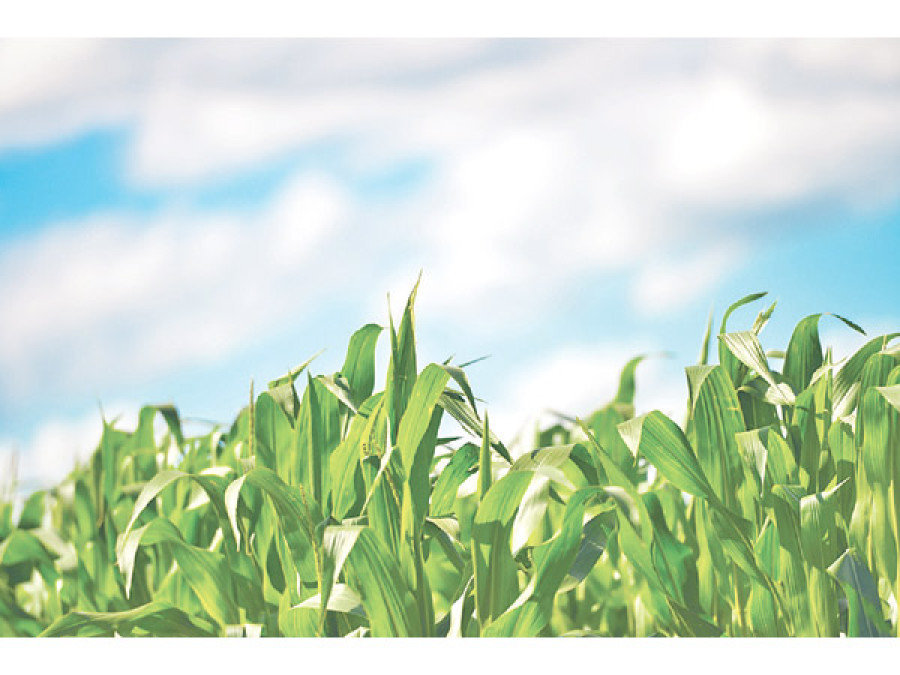Opinion
Agricultural transformation
The South Asian scientific and farming community must prepare to face challenges
Mjh Jabed
A2013 report of the Food and Agriculture Organisation of the United Nations (FAO) shows that 51 percent of South Asia’s 1.6 billion people are directly engaged in agriculture and 42 percent of South Asia’s landmass is under agricultural operation. The fact that only 20 percent of South Asia’s total Gross Domestic Product (GDP) is generated through farming activities would be a sentence wrenched out of context until it is elaborated as to what percentage of South Asian lives are impacted by our performance in agriculture on a daily basis.
Past and the present
The world economy has undergone revolutionary changes due to industrialisation and global integration of markets. In the world’s most advanced economies, percentage-wise, the proportion the labour force involved in agriculture is insignificant. However, strikingly, this is the sector over which multilateral trade negotiators are still nowhere close to finding a compromise and striking a deal to write global trade rules. Successive rounds of trade talks have failed to generate the expected results not merely because of the strong agriculture lobby back home but also due to the sensitivity and passion that are attached to this particular economic activity.
Given the all-encompassing and extremely intricate nature of agriculture and its impact on the global political economy, the coinage of the term “Agricultural Transformation” could not be more pertinent and time-befitting which, at the same time, demands an in-depth scientific analysis of the phenomenon and a knowledge-based and multi-stakeholder policy approach. Like many other parts of the agrarian world, South Asia’s agriculture too saw a gradual shift from traditional and labour-intensive farming to capital-intensive commercial farming from the middle of the last century. The time span can be segmented into the following three distinct phases. First, the traditional agriculture until the mid-20th century: A subsistence production system and low productivity in family-based farming activities. Second, the semi-commercial technology-led agriculture from the 1960s till the 1980s: The famous Green Revolution which led to the surpassing of all previous levels, scales and speeds of production. And third, the commercial agriculture since the 1980s: The introduction of the technological breakthroughs in all fields, such as biotechnology, ICT, production modulation and production technologies, processing and management, helped break yield barriers and attain higher production levels.
Challenges ahead
This pathway of agricultural transformation can be considered as a very striking example of adaptation strategies which led to enhanced productivity. The fact that rising productivity in the agricultural sector stimulates overall economic growth is confirmed by the diminishing relative contribution of agriculture to the GDP.
While this impressive journey must inspire us to carry out the next generation of reforms surrounding the agriculture sector and allocate resources to invent the most essential technology of sustainable farming, we must admit there is hardly much scope for complacence. South Asia still seems most vulnerable to even minute variations in both internal and external factors such as small landholdings, resource constraints of the farming community, an inhospitable production environment like uncultivable hills and mountains, flood plains and unprotected coastal lines, and dwindling land and water resources.
A host of factors such as global climate change, barriers in agricultural trade, over-exploitation of resources and marginalisation of small farmers caused by capital and technology-intensive production system, biased and unfair food distribution system, ageing population, weakening resilience in the agricultural system, breakdown in the production system caused by high dependence on external inputs such as variety and chemicals, and trans-boundary issues can wreak havoc on not only agriculture but the entire ecology of the region.
Saarc and agriculture
The South Asian Association for Regional Corporation (Saarc) has identified agriculture as one of the priority areas for fostering regional cooperation since its inception in 1985. Over the years, Saarc leaders have continued to extend guidance and commitment towards bolstering cooperation in the area of agriculture and food security. In order to enhance cooperation in agriculture, Saarc has adopted several policy documents. The Colombo Statement on Food Security and Regional Food Security Strategies adopted during the 15th Summit, the Saarc Agricultural Vision 2020 adopted during the Agricultural Ministerial Meeting of 2008, and the Saarc Declaration of Food Security Strategy adopted during the Agricultural Ministerial Meeting held in Delhi in 2008 are some examples.
In recent years, Saarc has, in partnership with international organisations including the FAO, European Union, Asian Development Bank and various donor countries, completed projects to address pressing issues like combating trans-boundary animal diseases, improving epidemic alerting mechanisms, developing regional varieties in the crop sector and training Saarc agricultural scientists and practitioners. A number of capacity building projects are in the pipeline whose successful implementation will help transform the Saarc Agriculture Centre in Dhaka into a truly regional centre of excellence.
The 18th Saarc Summit that Nepal successfully hosted in November 2014 took some milestone decisions to bring dynamism in the region’s agricultural profile. Our leaders offered valuable directives to increase investment, promote research and development, facilitate technical cooperation and apply innovative, appropriate and reliable technologies in the agriculture sector for enhancing productivity. They also underscored the importance of promoting sustainable agriculture. The leaders urged that the Saarc Seed Bank Agreement be ratified soon and directed that the Seed Bank Board be constituted immediately. The leaders also directed the relevant Saarc bodies to finalise the establishment of a Regional Vaccine Bank and Regional Livestock Gene Bank.
It is high time the scientific and farming community of South Asia realigned their natural and knowledge resources to cope with the challenges emanating from the transformation in agriculture as an economic activity. Neither local and national nor regional-level initiatives will suffice to bring in the desired change, particularly in terms of overcoming the multifarious constraints arising out of agricultural transformation, unless timely action strategies are formulated and implemented forming a science-private-public level tripartite coalition.
Jabed is the director, Agriculture & Rural Development, Saarc Secretariat in Kathmandu




 16.12°C Kathmandu
16.12°C Kathmandu











